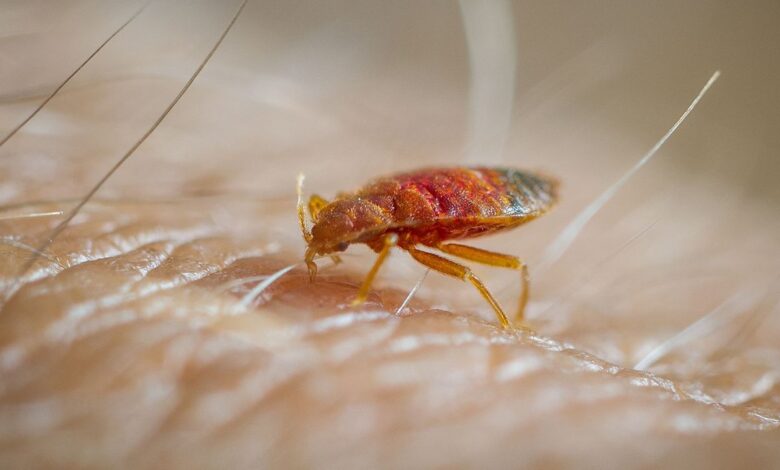The Bed Bug Comeback: Why Infestations Are Growing Despite Awareness

It seems like no matter how much we talk about bed bugs, they continue to make their presence known—often in places where they weren’t expected. Hotels, apartment buildings, movie theaters, office chairs, and public transportation have all become battlegrounds for one of the most persistent pest control problems of our time.
This resurgence is especially frustrating given how much is already known about these pests. We understand their biology, their behavior, and their preferred hiding spots. Yet, infestations are on the rise not just in major cities but also in smaller suburban and even rural communities.
Agile Pest Control, like many pest control providers, has seen firsthand how bed bugs have made a comeback in homes and businesses alike. But why is this happening in an era of heightened cleanliness, vigilance, and information sharing?
The Nature of the Enemy: Why Bed Bugs Are So Resilient
Unlike ants or cockroaches, bed bugs don’t need dirty conditions or food scraps to thrive. All they need is access to blood—and that means any environment where people spend time can become a viable home. Their minimalist needs are part of what makes them such successful hitchhikers.
Bed bugs don’t build nests. They don’t chew through walls or leave behind food trails. Instead, they slip quietly into the seams of furniture, behind baseboards, and inside electrical outlets. Because they’re small and mostly nocturnal, they often go undetected for weeks or months.
These pests have also developed significant resistance to many common insecticides. Over-the-counter solutions that may have worked a decade ago are now less effective, leading many homeowners to underestimate the scope of an infestation.
Travel and Mobility: A Global Access Pass for Bed Bugs
Bed bugs have become travelers of the modern age. They hide in the seams of suitcases, cling to fabric upholstery in buses and rideshares, and move from one apartment unit to the next without ever needing to walk outdoors. Increased international travel, dense urban housing, and the rise of shared spaces have given these insects more mobility than ever before.
Even high-end hotels or luxury homes aren’t immune. That’s because bed bugs don’t discriminate based on income, cleanliness, or geography. All it takes is one infested bag placed on a carpet, and within weeks, a small problem becomes a large one.
For this reason, pest control efforts often fail when focused only on isolated rooms. Bed bugs can travel through vents, across hallways, and even via shared laundry facilities. Without a comprehensive, property-wide approach, infestations often return shortly after treatments.
Social Stigma and Delayed Reporting
One of the major drivers of the bed bug comeback is silence. People are often embarrassed to report a bed bug problem. This delay allows infestations to grow, spread, and become more difficult to eliminate.
In multi-family housing, this is especially problematic. A tenant may notice bites or bug casings but wait to notify property management out of fear or shame. By the time treatment is initiated, bed bugs may have spread to adjacent units, wall cavities, and common areas.
Unlike pests that are associated with poor sanitation, bed bugs carry the false perception of being a “dirty home” issue. In truth, they can thrive in the cleanest environments. Breaking down this stigma is key to faster reporting and more effective pest control outcomes.
The Cost of Bed Bug Elimination
Another barrier to early action is cost. Bed bug treatments are often more expensive than other pest control services due to the complexity of detection and elimination. Homeowners or renters who try to resolve the issue using DIY methods may only address surface activity, allowing bugs hidden in deeper locations to repopulate the area.
While options like mattress encasements, heat treatments, and residual sprays can help, they’re often ineffective unless part of a well-planned, multi-stage intervention. Without proper support, people may cycle through temporary fixes without achieving full eradication.
Professional pest control in Rumson, NJ remains the most effective path forward, particularly when dealing with recurring infestations or large-scale outbreaks. And in areas where tenants live in close quarters, coordination across units is essential to ensure long-term success.
The Rise of Secondhand Goods
Furniture thrift stores, online marketplaces, and curbside finds have become more popular as people look for ways to save money or furnish homes sustainably. However, these secondhand items often serve as gateways for bed bugs.
Couches, chairs, mattresses, and even bookshelves can harbor live bugs or eggs deep in crevices. Because bed bugs can survive for weeks without feeding, they may remain hidden during transport and only become active once in a new environment.
Educating consumers about inspecting secondhand items and avoiding upholstered materials of uncertain origin can play a crucial role in reducing introductions of bed bugs into previously unaffected homes.
Behavioral Habits That Make a Difference
Though bed bugs are difficult to detect and remove, certain habits can help reduce risk:
- Avoid placing luggage on beds or fabric furniture when traveling
- Use hard-shell suitcases that are easier to inspect and clean
- Vacuum bedrooms and living areas regularly, including mattress edges
- Seal cracks and baseboards where pests can hide
- Wash and dry clothing on high heat after returning from travel
When moving into a new apartment or home, it’s also wise to inspect outlets, floorboards, and wall voids for early signs of infestation. The presence of small dark spots, shed skins, or a musty odor can all indicate bed bug activity.
Termite Control vs. Bed Bug Management: Why the Strategies Differ
It’s important not to lump all pest control strategies together. While termite control often focuses on moisture management and structural barriers, bed bug control requires targeted treatments in living spaces and personal belongings. This distinction is critical, especially for those who assume a one-size-fits-all approach will work.
Bed bugs don’t live outdoors or feed on wood, so methods like perimeter spraying or wood treatment offer no protection. Instead, effective control often involves direct treatment of mattresses, furniture, and baseboards—areas most pest control products don’t reach without professional application.
Where the Path Forward Begins
The growing awareness of bed bugs hasn’t yet translated into widespread prevention. Knowledge alone isn’t enough—habit change, early intervention, and destigmatizing infestations are all necessary steps.
Agile Pest Control remains focused on education and detection as core components of pest prevention. By recognizing the full range of factors driving bed bug resurgence—from global travel to urban density to misinformation—residents can take smarter steps to reduce their risk and respond quickly when problems arise.
As these pests continue to adapt, so must the strategies to manage them. Vigilance, communication, and prompt action remain the most effective defenses against this persistent invader.



